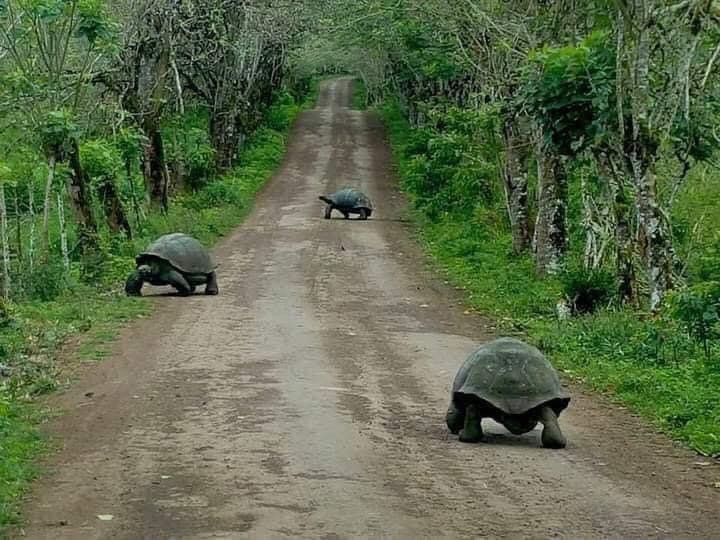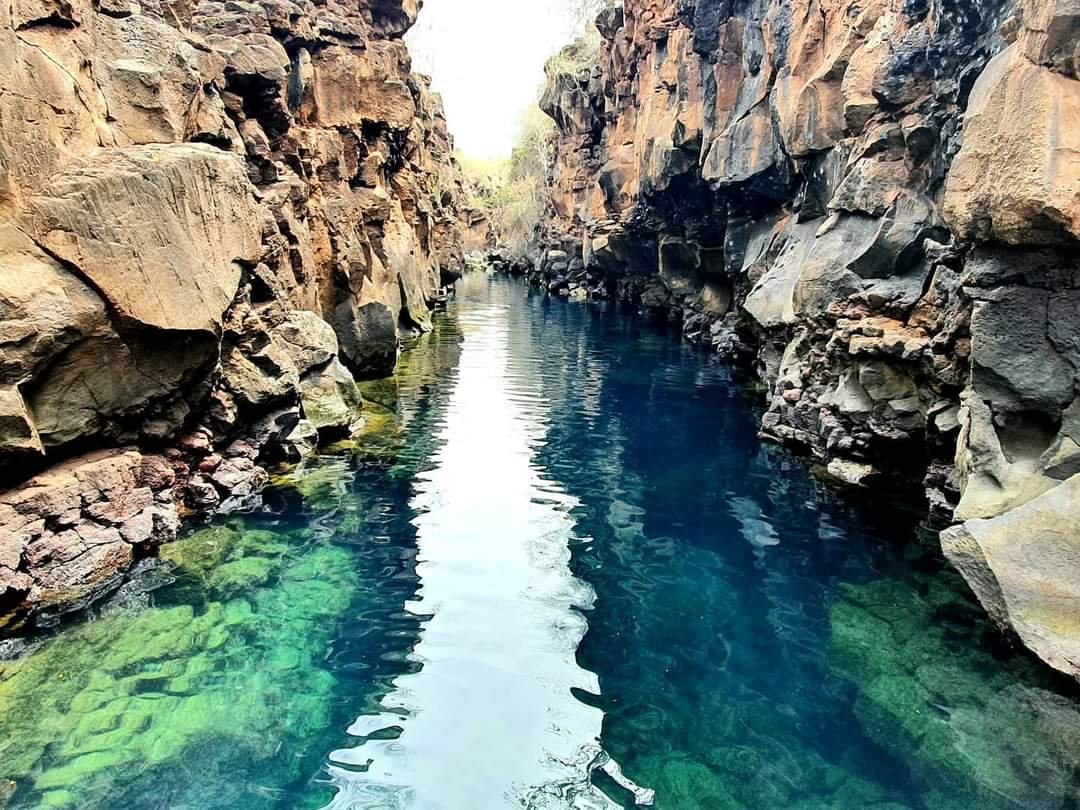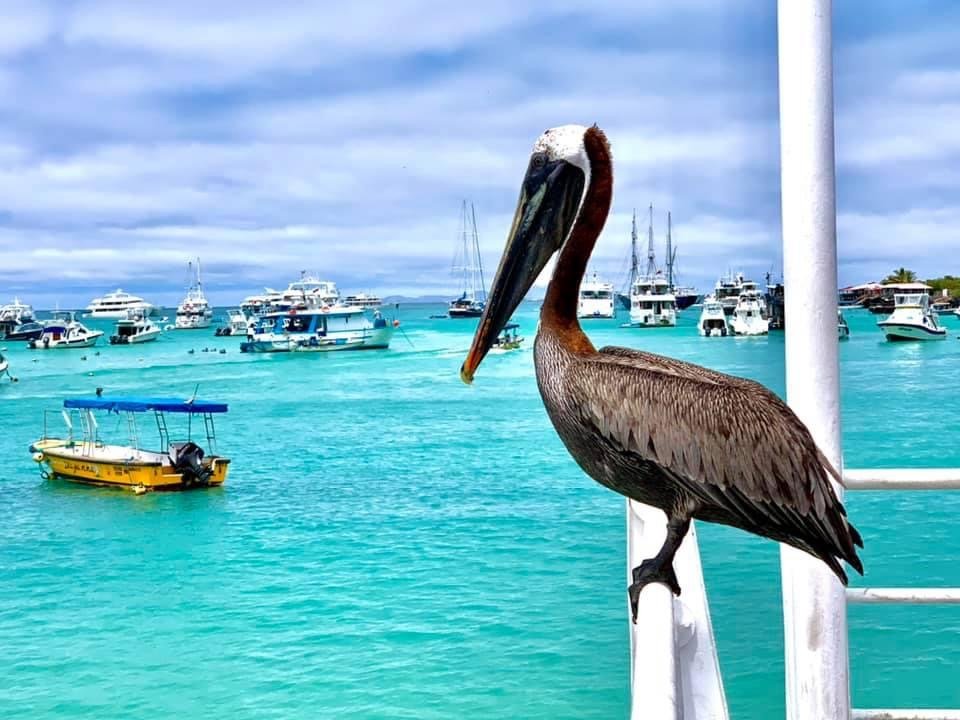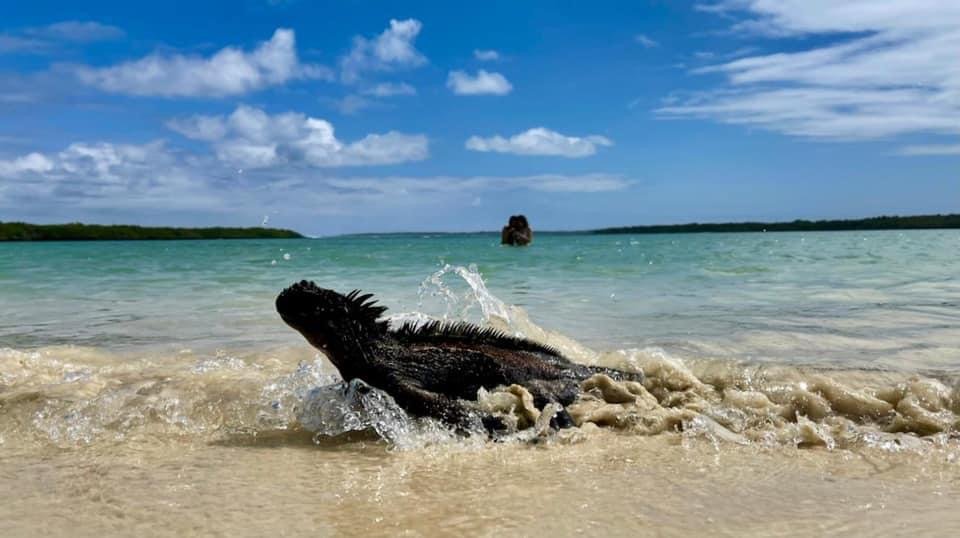Discovery 4Days|3Nights
Tour Package 4Days/3Nights.
Santa Cruz Island
Santa Cruz Island is one of Galapagos Island with an area of 986 km2 (381 sq mi) and a maximum altitude of 864 metres (2,835 ft). Situated in the center of the archipelago, Santa Cruz is the second largest island after Isabela. Its capital is Puerto Ayora, the most populated urban centre in the islands. On Santa Cruz there are some small villages, whose inhabitants work in agriculture and cattle raising. This island is a large dormant volcano. It is estimated that the last eruptions occurred around a million and a half years ago. There is a gigantic lava tunnel that is over 2000 meters long on the island that many tourists visit and walk through. As a testimony to its volcanic history there are two big holes formed by the collapse of a magma chamber: Los Gemelos, or "The Twins".Named after the Holy Cross, its English name (Indefatigable) was given after a British vessel HMS Indefatigable Santa Cruz hosts the largest human population in the archipelago at the town of Puerto Ayora, with a total of 12,000 residents on the island.
Tour Itineraries
First day: Santa Cruz Island.
AM: Pick up from the airport and drop off at the hotel.
Afternoon: Lunch and Visit the Charles Darwin Research Station, An incredible place where you can learn about the history of the Galapagos Ilsands as well as thier flora and fauna. Also the famous as the home of legendary Lonsome George (Chelonoidis nigra abingdonii), (the last tortise remaining of his species). Lonsome George was origianally from Pinta island. In 1971 he was brought to the research station in Santa Cruz. He died on June 24th 2012.
Second Day:
9:00 am: Santa Cruz Island bay tour, includes snorkeling in La Loberia and hiking around the island. We will visit the Shark Channel (Tintoreras) and the Lovers Channel (Canal Del Amor) then we will walk to the cristal clear waters of Las Grietas.
2:00 pm: Visit the Highlands of Santa Cruz and see the Galapagos turtles in their natural hábitat. Then we will go visit and hike through the lava tunels.
Third Day: Isabela Island.
Isabela Island (Is the largest island of the Galapagos with an area of 4,640 square kilometres (1,790 sq mi) and length of 100 kilometres (62 mi) almost four times larger than Santa Cruz, the second largest of the archipelago. It was named after Queen Isabela of Spain. It was originally named Albemarle after the Duke of Albemarle. The island strides the equator.
One of the youngest islands, Isabela is located on the western edge of the archipelago near the Galapagos hotspot . At approximately 1 million years old, the island was formed by the merger of 6 shield volcanoes-Alcedo,Cerro Azul, Darwin, Ecuador,Sierra Negra and Wolf. All of these volcanoes except Ecuador are still active, making it one of the most volcanically active places on earth. Two of the volcanoes, Volcan Ecuador and Volcan Wolf (the island's highest point with an elevation of 1,707 m (5,600 ft), lie directly on the equator. The island is primarily noted for its geology, providing excellent examples of a geologic occurrence that created the Galapagos Island including uplifts at Urvina Bay and the Bolivar Channel, tuff cones at Tagus Cove, and Pulmace on Alcedo and Sierra Negra, one of the most active volcanoes in the world.
From: 7am to 5pm.
Isabela Island. Boat trip: 2 hours approximately.
What you will do: visit the lagoon of the Flamingos, the tortise breeding center ¨La Galapaguera¨, What lunch, go to the Tintoreras, snorkel, return to Santa Cruz (2 hours back)
you can see: Galapagos Pinguins, Flamingos, Green Sea Turtles, Blue Footed Boobies, Sea lions, marine iguanas.
Includes: Transportation, Lunch, Snorkeling equipment, and Bilinguil Guide.
Not Included: Entrance Fee $5
Fourth day: Optional visit to Los Gemelos (the twins) before being dropped off at the Airport.
Prices include taxes.
Package INCLUDES
- hotel
- breakfast
- lunch
- snorkel equipment
- transportation
- naturalist guide.
Package DO NOT include
- Galapagos Airfare Ticket
- Galapagos Park Fee $100
- Ingala Migration Card $ 20
- Isabela Dock Fee $ 5
- Dinners (prices from $ 7 - $15)
- alcoholic beverages
- Tips.
For more info, CONTACT US.

Galapagos Islands Cruises
Galapagos Islands Tours
Galapagos Islands Diving
Galapagos Last minutes
Trips to Galapagos Islands
Galapagos Tours
Galapagos Cruises
Cruises to Galapagos
Tours to Galapagos
Travel to Galapagos
Travel to Ecuador
Travel to Peru
Travel to South América
Travel to Amazonas
Tourism Tour Galapagos Islands
Visiting Giant Turtles Giant Tortoises in Galapagos










